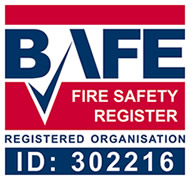Homes come in all shapes and sizes and whether you live in a tenth-floor flat or a large detached property, here at Dalec we’re happy to offer advice and guidance on the best burglar alarm for you.
Studies carried out by the Metropolitan Police have shown that a burglar alarm which is correctly installed and maintained will ensure that your home is less likely to be burgled. However, there are a number of different types of alarm available and many homeowners are daunted by the choice so we thought we’d cover the basics of what to consider.
The best type of alarm for your home depends on several things, such as the type and size of property, your personal preferences and your budget. However you’ll need to begin by thinking about what you’d want to happen in the event of the alarm being triggered. For example, a bell-only type of alarm will simply sound in the event of a break in but will not contact anyone, such as the police or a registered contact.
Alarms with a built-in speech dialler are designed to automatically contact you or a nominated contact (such as a neighbour or friend) when the alarm is triggered. The other option is to choose an alarm which is part of a monitoring contact: alarms of this type require an annual or monthly subscription payment for a company to take action or call the police in the event of the alarm sounding.
Costs can vary hugely between the different systems and we’ll carry out an initial assessment of your property to find the best alarm to suit your home and your budget. If you would like further information on our burglar alarm installation services in Leeds, please don’t hesitate to get in touch.








